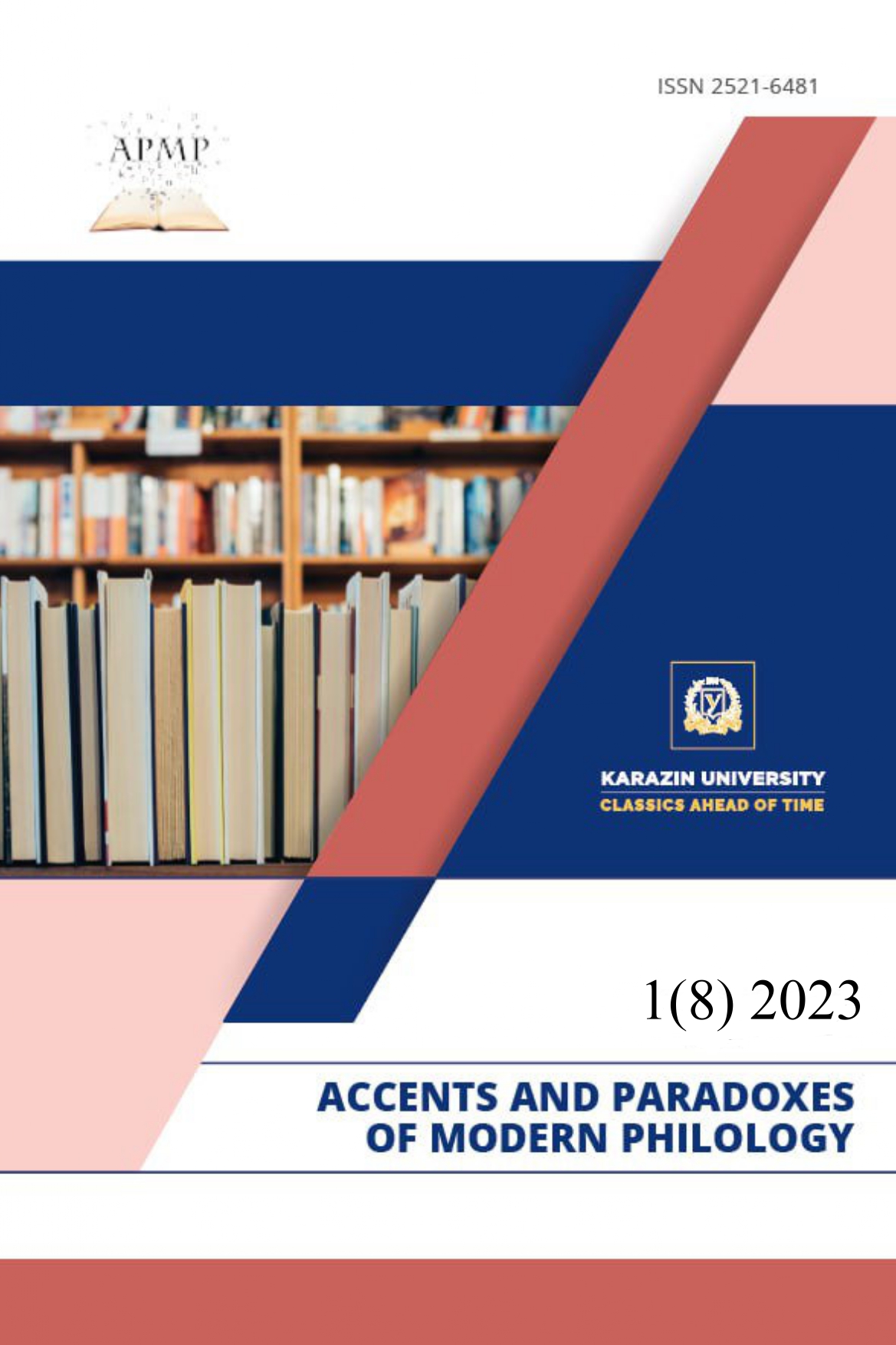THE STYLE OF THE MODERN GERMAN FABLE ON THE EXAMPLE OF THE FABLE TEXTS AND THE FABLE CONCEPT BY V. LIEBHEN (IN THE LINGUISTIC SYNERGETIC ASPECT)
Abstract
The article carries out a systematic analysis of the fable texts and the theoretical concepts of the fable, which belong to the famous German fabulist and theoretician of the fable, parable, and joke, Wilfried Liebchen. It was been proven that his fables and concepts are included in the general evolutionary-synergistic model of the development of the fiction genre, which was developed by the Ukrainian school of linguistic synergetics. The article presents and explains the main principles that, according to V. Liebhen, determine the existence and productivity of the fable genre. These are the principles of cognition, purpose and goal. The specifics of the components of the cognition principle are described in the fable, although, of course, every other literary genre is formed according to this principle in its own way. It is also noted that the principle of purpose in the specifics of the fable genre is the requirement of a visual illustration of a complex social phenomenon, a sociocultural factor that is easily generalizable. V. Liebhen opposes the limitations of the stylistic possibilities of the fable. Contrary to Lessing, V. Liebhen recognizes the productivity of not only the Aesopian (rhetorical) fable, but also the epic one. An analysis and evaluation of V. Liebhen fables and their role in the fable evolution of the 20th and early 21st centuries is provided. The stylistics and composition of fables of this period and ways of expressing meaning are analyzed; at the same time, it is noted that the modern fable achieves the fulfillment of the principles of its existence by other means than the fables of previous eras. In particular, in the fables of the 20th and 21st centuries, an unfinished image-symbol, a hierarchical plot appears. This creates prerequisites for a comprehensive perception of the idea of a fable by the reader. According to our observations, the modern fable reflects the realities due to its deep synergetic nature. Namely, it contains deep contradictions in its structure and meaning, which it creatively resolves, and also depends during its formation on attractors, which can be classified into separate groups (social, thematic, stylistic). So, the modern fable is a synergetic system. The conducted research is a contribution to the general synergetic theory of fiction style and to stylistic synergetics.




